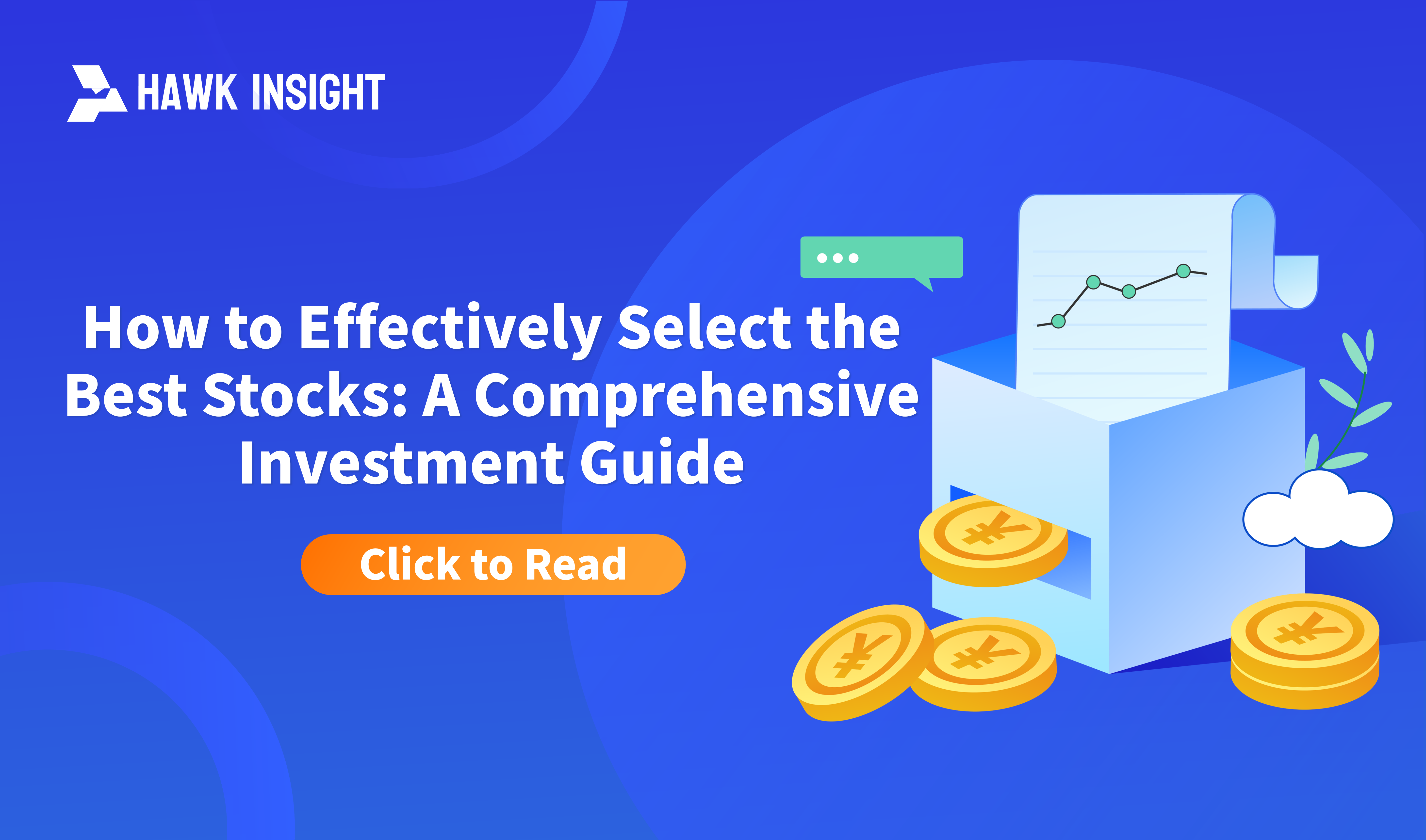How to Effectively Select the Best Stocks: A Comprehensive Investment Guide
Check this guide in order to understand what are the best stocks to buy.Dont fall on traps that can make you lose money.Follow the rules and get profits.

Finding the best stocks for investment presents challenges, but with systematic analysis and strategies, you can significantly improve the chances of investment success. Here’s a detailed guide on how to select the best stocks, covering aspects from timing analysis to cost control.
Recommended Stocks
- Facebook (FB)
- Apple (AAPL)
- Nvidia (NVDA)
- Alibaba (BABA)
These companies have strong market positions and growth potential in the technology and internet sectors and are worth considering for investment. However, investment decisions should not rely solely on recommendations; in-depth market analysis is also necessary.
1. Analyzing the Timing to Buy Stocks
Waiting for the Right Timing
Before deciding to buy a stock, you must confirm its price trend. Observe the stock chart, especially the daily chart, and wait for the price to break out of consolidation. For example, Apple (AAPL) might oscillate within a consolidation zone at some stage, and it is only a good time to enter when a clear uptrend or downtrend signal appears.

Trend Confirmation and Buying on Pullbacks
Once you confirm that the stock price is starting to rise, avoid rushing to buy. Wait for a price pullback—when the price temporarily falls and then rises again. This strategy is akin to "catching the train"—don’t jump on the train when it starts but wait until it is moving steadily.
2. Considering Support and Resistance Levels
Analyzing Support and Resistance
Support and resistance levels are crucial factors affecting stock price movements. The price might rebound when it approaches a support level, while it may encounter resistance near a resistance level. If the price fluctuates around support or resistance levels, it could impact short-term profits. Therefore, before making a buying decision, carefully analyze these technical indicators and avoid trading near obvious support or resistance levels.
_2634559117_332.png)
3. Paying Attention to the Bid-Ask Spread
Understanding the Bid-Ask Spread
The bid-ask spread is the difference between the buying price and the selling price of a stock. A larger spread increases transaction costs and affects profitability. For example, if a stock has a spread of $0.20, it means the buying cost is $0.20 higher than the selling price. This could lead to losses even if the stock price remains unchanged, as buying and immediately selling would incur a loss. Therefore, choosing stocks with a smaller spread can reduce transaction costs and enhance profit potential.
Impact of the Spread on Different Stocks
The impact of the spread varies between low-priced and high-priced stocks. For instance, a stock priced at $10 and one priced at $200 might have the same spread, but the effect on trading profit will differ. For low-priced stocks, a small spread can significantly impact profits, while the relative impact on high-priced stocks is smaller.
4. Calculating the Impact of Commissions on Trades
Commissions and Trading Costs
Each trade usually incurs a commission, which affects the final trading profit. Suppose a broker charges $0.02 per share in commission, with $0.02 for buying and $0.02 for selling, totaling $0.04. If the spread is $0.06, the stock price needs to move $0.10 in your trading direction before you start making a profit.
Impact of Minimum Commissions
Brokers often set a minimum commission standard, such as a minimum of $1 per trade. If the trading volume is below this minimum standard, the actual commission will increase. For example, if you buy only 25 shares, the actual commission will be $1, much higher than the $0.04 calculated per share. Therefore, ensure that the trading volume is sufficient to avoid the negative impact of minimum commissions on trading costs.
5. Considering the Bid-Ask Spread on Higher Time Frames
Spread Impact on Higher Time Frames
On longer time frames (such as 4-hour or daily charts), the impact of the spread is smaller because trading profits usually require more significant price movements. However, it is still essential to choose stocks with a smaller spread to maximize profit potential.
Summary
Selecting the best stocks involves considering multiple factors:
- Wait for Trend Confirmation: Ensure the stock price trend is clear before entering and buy after a price pullback.
- Analyze Support and Resistance: Avoid trading near obvious support or resistance levels, and choose stocks with fewer barriers.
- Pay Attention to the Spread: Opt for stocks with a smaller spread to reduce transaction costs.
- Calculate Commissions: Understand the impact of commissions on trading costs and choose a platform with reasonable fees.
- Consider Time Frames: On higher time frames, the spread’s impact is smaller, but still choose stocks with a manageable spread.
By following these principles, you can enhance the scientific basis of your investment decisions, identify more promising stocks, and achieve better trading results. I hope this guide helps you achieve better investment outcomes in the stock market.
Disclaimer: The views in this article are from the original Creator and do not represent the views or position of Hawk Insight. The content of the article is for reference, communication and learning only, and does not constitute investment advice. If it involves copyright issues, please contact us for deletion.